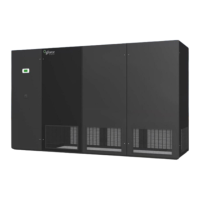NOTICE: Prior to refrigerant charging, the proper tools and/or equipment
must be available, and the system vacuum and moisture removal procedure
must have been carried out. Refer to Section 5.1 Charging/Installation Work
Procedures and 5.2 Triple Evacuation and Dehydration Procedure prior to
charging the system.
NOTICE: Improper charging procedure could cause compressor damage in
several ways: excessive Low/High Pressure differences, liquid slugging or
vacuum operation. The below system refrigerant charge procedure is strongly
recommended to reduce these risks.
WARNING: The compressor power must be OFF and safeties ON and
prevented from starting inadvertently/automatically.
WARNING: If the system is charged from a vacuum, the preheating of
the compressor is not necessary. But if starting a compressor that has not
been charged from a vacuum, the crankcase heater must be energized
for a minimum of 12 hours to reduce the possibility of liquid slugging on
start-up. Failure to energize the crankcase heater could result in
compressor damage.
NOTICE: Charging to a full liquid line sight glass should never be the sole
means of determining the correct refrigerant charge. Other parameters such
as superheat, suction pressure, head pressure, sub-cooling and ambient
temperature are also important. A system charged to a clear sight glass is
often overcharged.
WARNING: Avoid trapping refrigerant in sections where hydrostatic
pressure can develop. If refrigerant can be trapped in part of the system,
a liquid line relief valve may be required.
Flooded systems are supplied with an optional liquid receiver and head pressure control valve.
When the ambient temperature falls during cold weather, the head pressure control valve will
regulate the flow of refrigerant to ensure minimum receiver pressure. The sub-cooling, at
times, will fluctuate. The condenser is partially flooded with liquid refrigerant in cold weather. In
warm weather, the extra refrigerant is stored in the receiver.

